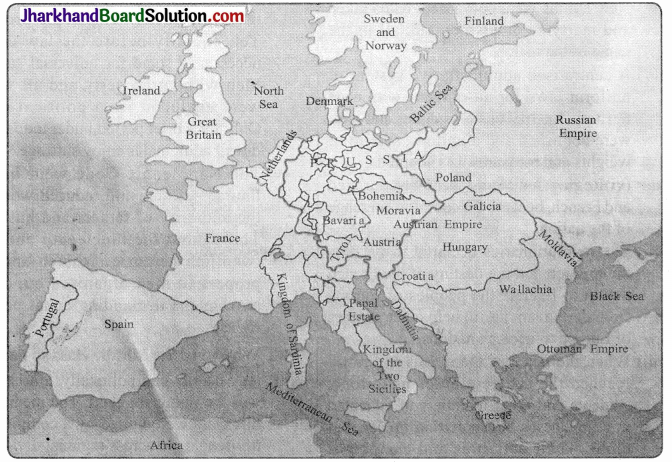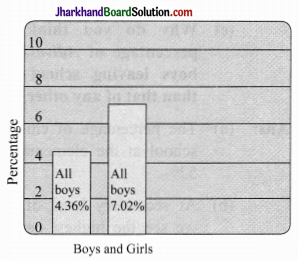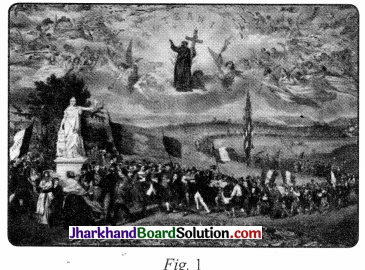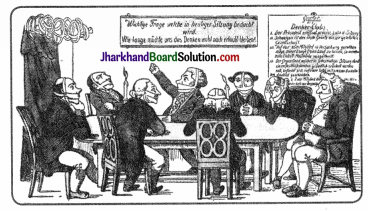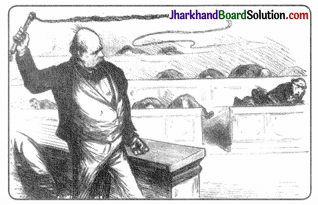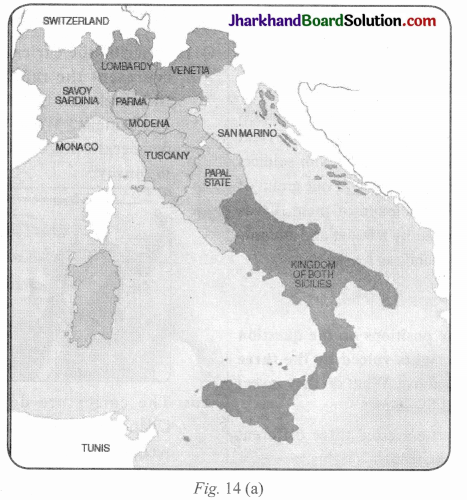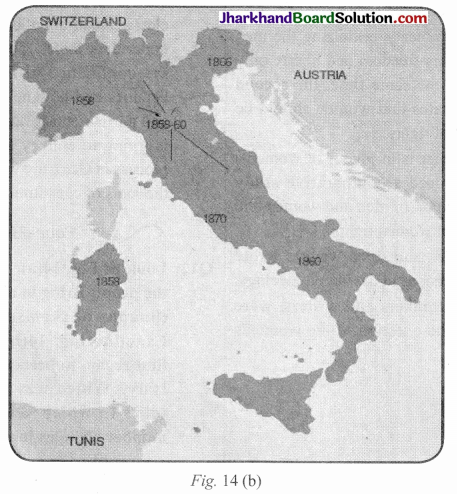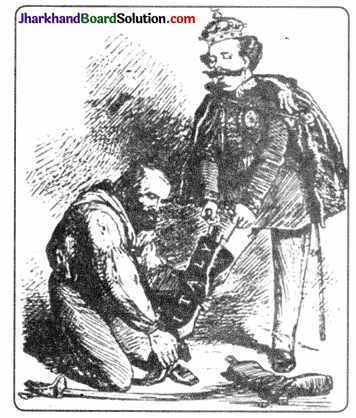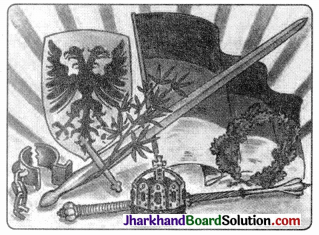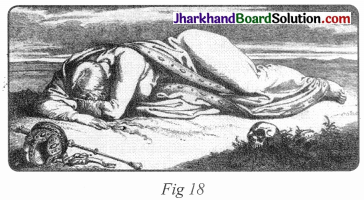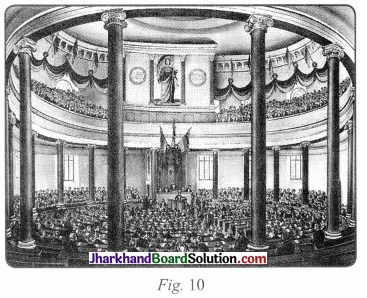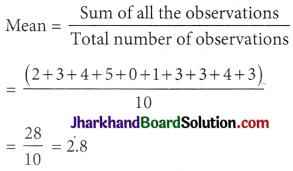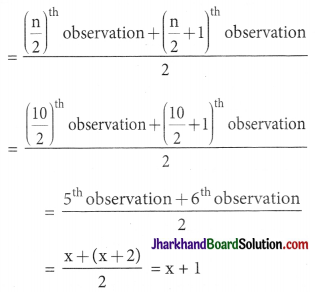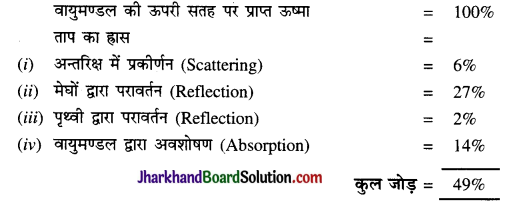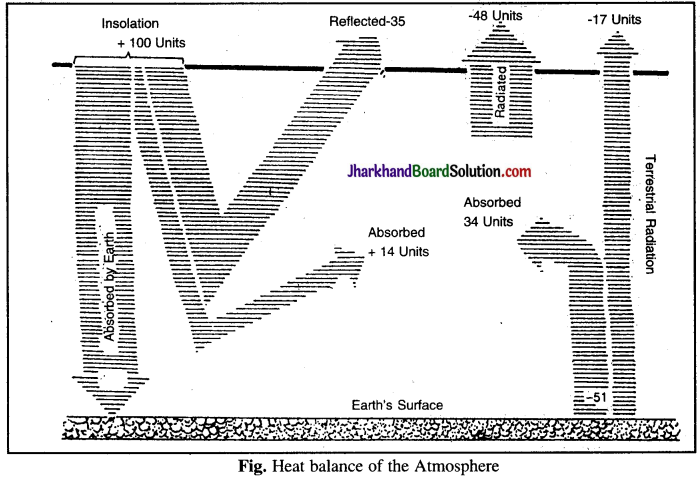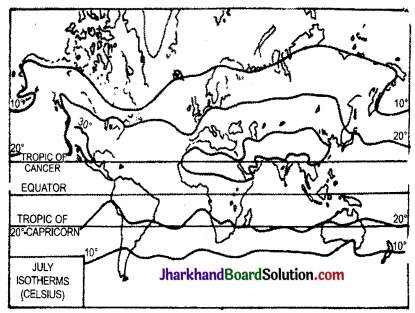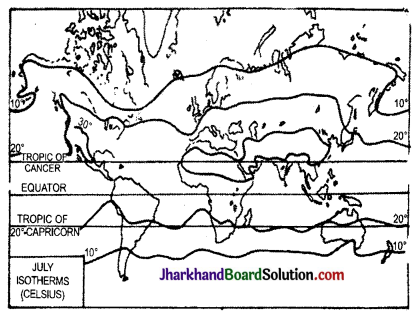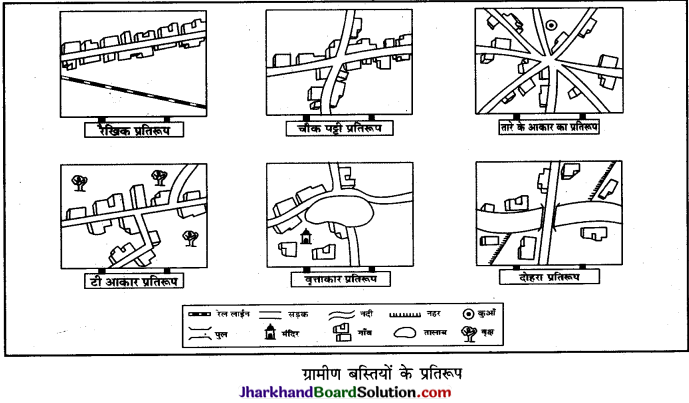JAC Board Class 10th Social Science Important Questions History Chapter 1 The Rise of Nationalism in Europe
Multiple Choice Questions
Question 1.
The first clear expression of Nationalism in Europe came with:
(a) The American Revolution
(b) The French Revolution
(c) The Russian Revolution
(d) The Industrial Revolution
Answer:
(b) The French Revolution
Question 2.
Nationalism brought about in Europe the emergence of:
(a) The Nation-State
(b) The Modem State
(c) Multinational Dynastic State
(d) Alliances formed among many European states
Answer:
(a) The Nation-State
Question 3.
Frederic Sorrieu, a French artist, in his . series of four prints (1848) visualised his dream of a world as:
(a) A world made up of ‘democratic and social republics’
(b) A world made up of one nation, one world
(c) A world with one absolute ruler
(d) A world following one religion, one language
Answer:
(a) A world made up of ‘democratic and social republics’
Question 4.
The ideas of a United Community enjoying equal rights under a Constitution were expressed by the French as:
(a) La Patrie
(b) Le Citoyen
(c) Both (a) and (b)
(d) None of the above
Answer:
(c) Both (a) and (b)
![]()
Question 5.
The Civil Code of 1804, also known as the Napoleonic Code, established:
(a) Equality before the law
(b) Secured the right to property
(c) Did away with all the privileges based on birth
(d) All the above
Answer:
(d) All the above
Question 6.
What kind of political and constitu¬tional change was brought about by the French Revolution?
(a) It ended the absolute monarchy
(b) It transferred power to a body of the ‘ French citizens
(c) It proclaimed that henceforth people would constitute the nation and shape its destiny
(d) ALtthe above
Answer:
(d) ALtthe above
Question 7.
The three leaders who helped unification of Italy were:
(a) Giuseppe Mazzini, Victor Emmanuel II, Cavour
(b) Giuseppe Mazzini, Cavour, Giuseppe Garibaldi
(c) Victor Emmanuel, Bismarck, Cavour
(d) None of the above
Answer:
(b) Giuseppe Mazzini, Cavour, Giuseppe Garibaldi
Question 8.
Socially and politically dominant class in Europe during mid-eighteenth century was
(a) The Nobility
(b) The landed aristocracy
(c) The Church
(d) The absolute monarchs
Answer:
(a) The Nobility
Question 9.
The denial of universal suffrage in Europe, led to
(a) Revolutions
(b) Women and non-propertied men organising opposition movements, demanding equal rights throughout 19th and early 20th centuries
(c) Demand of equal political rights
(d) Return of monarchy
Answer:
(b) Women and non-propertied men organising opposition movements, demanding equal rights throughout 19th and early 20th centuries
Question 10.
In politics, liberalism emphasised
(a) End of autocracy and clerical privileges, a constitution and a representative government through Parliament
(b) The inviolability of private property
(c) The right to vote
(d) Both (a) and (b)
Answer:
(d) Both (a) and (b)
Very Short Answer Type Questions
Question 1.
Name the event that mobilised nationalist feelings among the educated elite across Europe in 1830-1848?
Answer:
The event that mobilised nationalist feelings among the educated elite across Europe in 1830-1848 was the Greek War ofIndependence.
Question 2.
What was the main aim of the revolutionaries of Europe during the years following 1815?
Answer:
The main aim of the revolutionaries of Europe during the years following 1815 was to oppose monarchical forms of government, that had been established after the Congress of Vienna and to fight for liberty and freedom.
Question 3.
Who was proclaimed the German Emperor in a ceremony held at Versailles in January 1871?
Answer:
Kaiser William I of Prussia was proclaimed the German Emperor in a ceremony held at Versailles in January 1871.
![]()
Question 4.
What is meant by Liberalism?
Answer:
The word ‘Liberalism’ derived from the Latin word ‘Liber’ meaning ‘free’. It stands for the end of aristocratic and clerical privileges, a constitution and representative government through parliament.
Question 5.
What was the main aim of the Treaty of Vienna of 1815?
Answer:
The Treaty of Vienna of 1815 was signed with the aim of undoing most of the changes that had come about in Europe during the Napoleonic wars. It was signed to re-establish conservative regions in Europe.
Question 6.
What were the disadvantages of the administrative changes introduced by Napoleon?
Answer:
The disadvantages of the administrative changes introduced by Napoleon were outweighed by increased taxation, censorship and forced conscription into the French armies.
Question 7.
What were the immediate results of the Revolution of 1830 in France?
Ans.
As a result of Revolution of 1830, the Bourboh Kings who had been restored to power by the Congress of Vienna.
Question 8.
When was the Act of Union passed and with what results?
Answer:
The Act of Union between England and Scotland took place in 1701. It led to the formation of United Kingdom of Great Britain.
Question 9.
Name the leader and the states which gave leadership in Italian Unification.
Answer:
Victor Emmanuel II the king of Piedmont and Sardinia gave leadership in Italian Unification.
Question 10.
Who were the conservatives?
Answer:
The Conservatives supported the traditional institutions and norms. They believed that the institutions of monarchy, the church, social hierarchies, property and family should be preserved.
Short Answer Type Questions
Question 1.
How did nationalism and the idea of the nation-state emerge?
Answer:
Socially and politically, aristocracy was the dominant class on the continent. The members of this class were united by a common way of life that cut across regional divisions. They owned estates in the countryside and also town-houses. They spoke French for purposes of diplomacy and in high society.
Their families were often connected by ties of marriage. This powerful aristocracy was, however, numerically a small group. The majority of the population was made up of the peasantry. To the west, the bulk of the land was farmed by tenants and small owners, while in Eastern and Central Europe the pattern of landholding was characterised by vast estates which were cultivated by serfs.
![]()
Question 2.
What led to the spread of conservatism in Europe and what were its impacts?
Answer:
Following the defeat of Napoleon in 1815, European governments were driven by a spirit of conservatism. Conservatives believed that established, traditional institutions of state and society – like the monarchy, the Church, social hierarchies, property and the family – should be preserved.
Most conservatives, however, did not propose a return to the society of pre-revolutionary days. Rather, they realised, from the changes initiated by Napoleon, that modernisation could in fact strengthen traditional institutions like the monarchy. It could make state power more effective and strong. A modern army, an efficient bureaucracy, a dynamic economy, the abolition of feudalism and serfdom could strengthen the autocratic monarchies of Europe.
Question 3.
What was the reaction to the Napoleonic code?
Answer:
Initially many people welcomed French armies as harbingers of liberty. But the initial enthusiasm soon turned to hostility, as it became clear that the new administrative arrangements did not go hand in hand with political freedom. Increased taxation, censorship, forced conscription into the French armies as required to conquer the rest of Europe, all seemed to outweigh the advantages of the administrative changes.
Question 4.
What were the highlights of the Treaty of Vienna, 1815?
Answer:
In 1815, representatives of the European powers – Britain, Russia, Prussia and Austria – who had collectively defeated Napoleon, met at Vienna to draw up a settlement for Europe. The main highlights were to how the nation could develop and what economic measures could help forge this nation together.
![]()
Question 5.
On what basis the female allegories were given names?
Answer:
Many female allegories were invented by artists in the nineteenth century to represent the nation. In France she was christened Marianne, a popular Christian name, which underlined the idea of a people’s nation. Her characteristics were drawn from those of Liberty and the Republic – the red cap, the tricolour, the cockade.
Statues of Marianne were erected in public squares to remind the public of the national symbol of unity and to persuade them to identify with it. Marianne images were marked on coins and stamps. Similarly, Germania became the allegory of the German nation. In visual representations, Germania wears a crown of oak leaves, as the German oak stands for heroism.
Question 6.
What was the Romantic Imagination about a nation?
Answer:
Romanticism was a cultural movement which sought to develop a particular form of nationalist sentiment. Romantic artists and poets generally criticised the glorification of reason and science and focused instead on emotions, intuition and mystical feelings. Their effort was to create a sense of a shared collective heritage, a common cultural past, as the basis of a nation. The emphasis on vernacular language and the collection of local folklore was not just to recover an ancient national spirit, but also to carry the modem nationalist message to large audiences who were mostly illiterate.
Question 7.
What led to the rise of the revolutionaries?
Answer:
During the years following 1815, the fear of repression drove many liberal nationalists underground. Secret societies sprang up in many European states to train revolutionaries and spread their ideas. To be revolutionary at this time meant a commitment to oppose monarchical forms that had been established after the Vienna Congress and to fight for liberty and freedom. Most of these revolutionaries also saw the creation of nation-states as a necessary part of this struggle for freedom.
Question 8.
What views did Giuseppe Mazzini have about Italy?
Answer:
Mazzini believed that God had intended nations to be the natural units of mankind.
So Italy could not continue to be a patchwork of small states and kingdoms. It had to be forged into a single unified republic within a wider alliance of nations. This unification from above could be the basis of Italian unity.
![]()
Question 9.
What was understood by the term ‘Liberalism’?
Answer.
The term liberalism derives from the Latin root liber meaning free. For the new middle classes liberalism stood for freedom for the individual and equality of all before law. Politically, it emphasised the concept of government by consent. Since the French Revolution, liberalism had stood for the end of autocracy and clerical privileges a constitution and representative government through parliament. Nineteenth century liberals also stressed the inviolability of private property.
Question 10.
What has made the Balkan a source of nationalist tension?
Answer:
The most serious source of nationalist tension in Europe after 1871 was the area called the Balkans. The region had geographical and ethnical varieties. The Balkans included Romania, Bulgaria, Albania, Greece, Macedonia, Croatia, Bosnia-Herzegovina, Slovenia, Serbia and Montenegro. The inhabitants of the Balkan regions were called slavs. Most of the Balkan region was under Ottoman Rule. The spread of the ideas of romantic nationalism in the Balkans together with the disintegration of the Ottoman Empire made this region very explosive.
Long Answer Type Questions
Question 1.
What were the reforms made by Napoleon?
Answer:
Napoleon introduced many reforms that he had already introduced in France to all territories under his control. Through a return to monarchy Napoleon destroyed democracy in France, but in the administrative field he had incorporated revolutionary principles in order to make the whole system more rational and efficient.
(i) The Civil Code of 1804 – also known as the Napoleonic Code – did away with all privileges based on birth, established equality before the law and secured the right to property.
(ii) This Code was exported to the regions under French control. In the Dutch Republic, in Switzerland, in Italy and Germany, Napoleon simplified administrative divisions, abolished the feudal system and freed peasants from serfdom and manorial dues.
(iii) In the towns, guild restrictions were removed. Transport and communication systems were improved.
(iv) Peasants, artisans, workers and new businessmen enjoyed a new-found freedom. Businessmen and small-scale producers of goods, began to realise that uniform laws, standardised weights and measures, and a common national currency would facilitate the movement and exchange of goods and capital from one region to another.
(v) In the areas conquered, the reactions of the local populations to French rule were mixed. Initially, in Holland, Switzerland and cities like Brussels, Mainz, Milan and Warsaw, the French armies were welcomed as harbingers of liberty. But the initial enthusiasm soon turned to hostility, as it became clear that the new administrative arrangements did not go hand in hand with political freedom.
(vi) Increased taxation, censorship, forced recruitment into the French armies required to conquer the rest of Europe, all seemed to outweigh the advantages of the administrative changes.
![]()
Question 2.
Describe the French Revolution.
Answer:
France was a full-fledged territorial state in 1789 under the rule of an absolute monarch. The political and constitutional changes that came in the wake of the French Revolution led to the transfer of sovereignty from the monarchy to a body of French citizens. The revolution proclaimed that the people would constitute the nation and shape its destiny. The French revolutionaries introduced various measures and practices that could create a sense of collective identity amongst the French people:
(i) The ideas of la patrie (the fatherland) and le citoyen (the citizen) of a united community enjoying equal rights under a constitution.
(ii) A .new French flag, the tricolour, was chosen to replace the former royal standard.
(iii) The Estates General was elected by the body of active citizens and renamed the National Assembly.
(iv) New hymns were composed, oaths taken and martyrs commemorated, all in the name of the nation.
(v) A centralised administrative system of uniform laws for all citizens within its territory. Internal customs duties and dues were abolished and a uniform system of weights and measures was adopted.
(vi) Regional dialects were discouraged and French, became the common language -of the nation.
(vii) The revolutionaries declared that it was the mission and the destiny of the French nation to liberate the peoples of Europe from despotism, i.e.,
to help other peoples of Eqr&pe to become nations.
(viii) When the news of the events in France reached the different cities of Europe, students and other members of educated middle classes began setting up Jacobin clubs. Their activities and campaigns
prepared the way for the French armies which moved into Holland, Belgium, Switzerland and much of Italy in the 1790s.
(ix) With the outbreak of the revolutionary wars, the French armies began to carry the idea of nationalism abroad.
![]()
Question 3.
What did Liberal Nationalism stand for?
Answer:
(i) Ideas of national unity in early nineteenth century Europe were closely allied to the ideology of liberalism. The term ‘liberalism’ derives from the Latin word liber, meaning free.
(ii) For the new middle classes liberalism stood for freedom for the individual and equality of all before the law.
(iii) Politically, it emphasised the concept of government by consent. Since the French Revolution, liberalism had stood for the end of autocracy and clerical privileges, a constitution and representative government through parliament.
(iv) Nineteenth century liberals stressed the inviolability of private property. Yet, equality before the law did not necessarily stand for universal suffrage. Men without property and all women were excluded from political rights. Only for a brief period under the Jacobins did all adult males enjoy suffrage.
(v) The Napoleonic Code went back to limited suffrage and reduced women to the authority of fathers and husbands. Throughout the nineteenth and early twentieth centuries women and non- propertied men organised opposition movements demanding equal political rights.
![]()
Question 4.
Why were the Middle class so named?
Answer:
(i) Socially and politically, a aristocracy was the dominant class. The members of this class were united by a common way of life that cut across regional divisions.
(ii) They owned estates in the countryside and also town-houses. They spoke French for purposes of diplomacy and in high society. Their families were often connected by ties of marriage. This powerful aristocracy was, numerically a small group.
(iii) The majority of the population was made up of the peasantry. To the west, the bulk of the land was farmed by tenants and small owners, while in Eastern and Central Europe the landholdings were vast estates which were cultivated by serfs. In Western and parts of Central Europe the growth of industrial production and trade meant the growth of towns and the emergence of commercial classes whose existence was based on production for the market.
(iv) Industrialisation began in England in the second half of the eighteenth century, but in France and parts of the German states it occurred only during the nineteenth century. In its wake, new social groups came into being: a working-class population, and middle classes made up of industrialists, businessmen, professionals.
(v) In Central and Eastern Europe these groups were smaller in number till late nineteenth century. It was among the educated, liberal middle classes that ideas of national unity following the abolition of aristocratic privileges gained popularity.
Activity Based Questions
Questioin 1.
On a political map of Europe, mark the following states which emerged in Europe after the Congress of Vienna in 1815.
(a) Sardinia
(b) Spain
(c) Portugal
(d) France
(e) Ottoman Empire
(f) Kingdom of the Two Sicilies
(g) Kingdom of the Papal Estate – Rome
(h) Austrian Empire – Austria, Hungary and Galicia
Answer:
